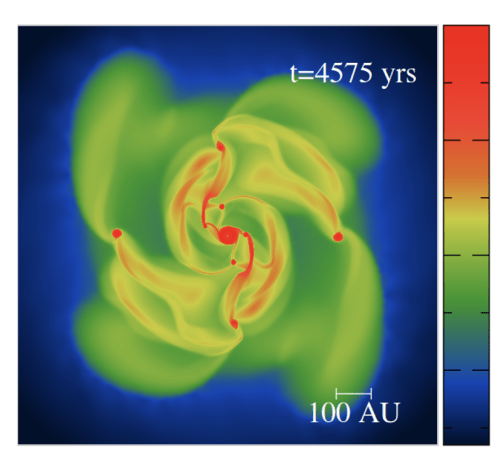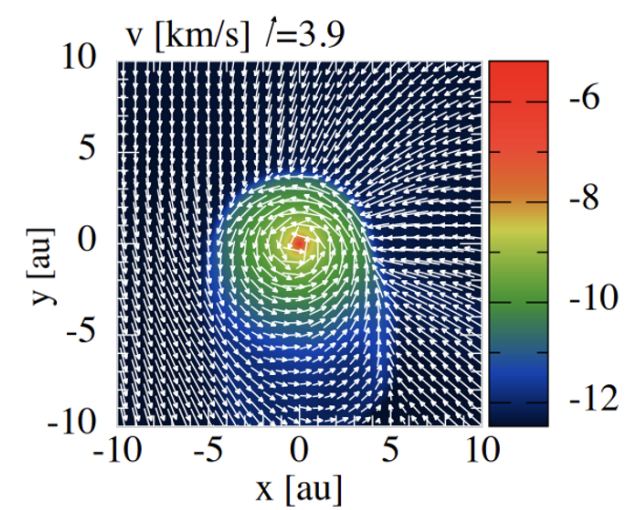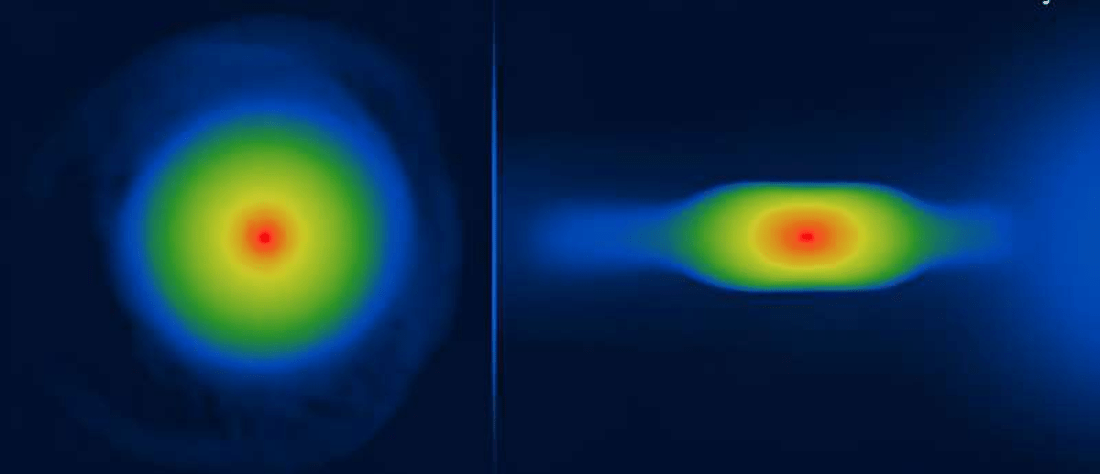One of contemporary astronomy’s most pressing questions concerns planet formation. We can see more deeply than ever into very young solar systems where planets are taking shape in the disks around young stars. But our view is still clouded by all the gas and dust in these young systems.
The picture of planet formation just got cloudier with the discovery that some young planets are shaped like flattened candies rather than spheres.
There are two main theories for planet formation, and they both start with stars.
Stars are born in giant molecular clouds of hydrogen. Due to natural variability in these clouds, dense cores of material form. As these cores gather more and more material, they eventually form a protostar. Protostars haven’t begun fusion yet, and they’re surrounded by gas and dust from their parent cloud. That reservoir of gas and dust is called a solar nebula.
As the protostar begins to rotate, the solar nebula begins to flatten out into a rotating disk. It’s called a protoplanetary disk, and this is where planets form according to two theorized processes.

One of those processes is the core accretion theory. In core accretion, planetesimals form in the disk, and eventually, enough of them combine through collisions to form a rocky core. The rocky core continues to accrete more material from the disk through collisions. Once the core is massive enough, it can attract an atmosphere. Core accretion explains how rocky planets like Earth form as spheres.
But, the core accretion theory has limitations. It can’t explain how gas giants form because core accretion would take forever to manifest a planet like Jupiter. It also can’t explain moons well.
Instead, the disk fragmentation or disk instability theory explains how gas giants can form on wider orbits than terrestrial planets. Due to instabilities in the protoplanetary disk, massive planet-size clumps form quickly in the disk, and their gravity draws more material toward them. Over time, planets like Jupiter and Saturn form.
“This theory is appealing due to the fact that large planets can form very quickly at large distances from their host star, explaining some exoplanet observations,” said Fenton.
“We were very surprised that they turned out to be oblate spheroids, pretty similar to smarties.”
Research co-author Dimitris Stamatellos, University of Central Lancashire
A new research letter to be published in the journal Astronomy and Astrophysics presents evidence that young planets that form from disk instability aren’t spherical. Instead, they’re oblate spheroids shaped like flattened SmartiesTM. The research letter is titled “The 3D structure of disc-instability protoplanets,” and the authors are Adam Fenton and Dimitris Stamatellos. Fenton and Stamatellos are both from the Jeremiah Horrocks Institute for Mathematics, Physics, and Astronomy at the University of Central Lancashire.
“Many exoplanets, which are planets that orbit stars in other solar systems outside of our own, have been discovered in the last three decades,” Fenton said in a press release accompanying the research. “Despite observing many thousands of them, how they form remains unexplained.”
Explaining how planets form by observing them is extremely difficult. Young planets are shrouded by the gas and dust in the disk. In this research, the pair used a supercomputer to perform advanced simulations of wide-orbit planets forming via the disk instability process.

The researchers focused on the shapes young planets take and how they can grow into massive behemoths like Jupiter. In their simulations, they varied things like disk temperature and gas density.
“It was an extremely demanding computational project requiring half a million CPU hours on the UK’s DiRAC High-Performance Computing Facility,” Fenton said. “But the results were amazing and worth the effort.”
The most surprising result of the simulations is that planets forming due to disk instability take the shape of Smarties, oblate spheroids.
“We have been studying planet formation for a long time, but never before had we thought to check the shape of the planets as they form in the simulations,” said co-author Dimitris Stamatellos. “We had always assumed that they were spherical.”
“We were very surprised that they turned out to be oblate spheroids, pretty similar to smarties.”
Overall, the simulation results showed that the 3D structure of exoplanets that form via instability is shaped by their environment in the disk. Interactions with a galaxy’s spiral arms and even past merger events can contribute to the shape, especially the outer regions of the exoplanets. But most were oblate spheroids, regardless. “The large majority of the protoplanets that form in the simulations are oblate spheroids rather than spherical, and they accrete faster from their poles,” the researchers explain.

When it comes to directly observing exoplanets as they form, we’ve got a while to wait. Upcoming telescopes like the Giant Magellan Telescope and the European Southern Observatory’s Extremely Large Telescope (ELT) will bring us closer to seeing exoplanets in detail. The ELT is touted as being able to see individual, large exoplanets. The first light for these telescopes is several years away.
These simulations show that the viewing angle can be key. From the top, these planets appear as spheres, but from the side, their oblate nature becomes clear. From the wrong angle, it’s possible to misunderstand the planet formation process.
“The 3D structure of disc-instability protoplanets is expected to affect their observed properties and should be taken into account when interpreting observations of protoplanets embedded in their parent discs,” the authors write.


The sim looks like a fat Smartie rather than a flattened Smartie. 😉